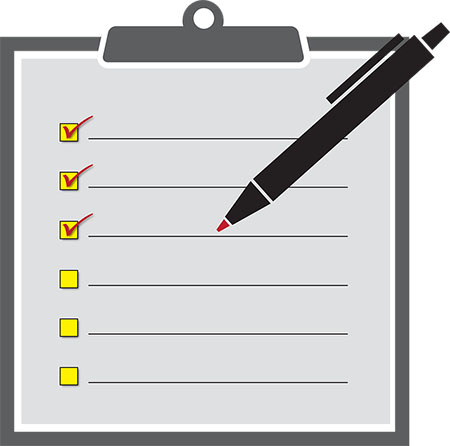Learn in this seventh post in the Overcoming Burnout series how to beat back busyness to reclaim your time at work and fight burnout.
Feeling overwhelmed and too busy with work tasks on a regular basis are both causes and symptoms of burnout.
Sure, a certain amount of being busy with work is inevitable. It can even be healthy and productive.
But frequently being harried, with way too much to do, and feeling out-of-control with your work tasks, time, and schedule, can undermine your energy and your health. And certainly it can lead to burnout.
To fight burnout and improve your well-being at work, it is critical that you claw back some control and reclaim your time.
Setting compassionate boundaries is one of three general strategies for reclaiming your time at work, as a prior post described.
A second major (and complementary) strategy, which is inspired in part by Stephen Covey’s work and other time management principles, combines priority setting and conscious scheduling. This approach as it relates to work well-being includes a number of specific techniques, as described in my upcoming book, Finding Purpose in a Burned Out World: How You Can Overcome Burnout.
Two of these techniques from this approach are described in this post.
A first key step is to develop a priority list for your tasks and times.
A priority list of your work activities is far superior to keeping a general to-do-list.
As you have probably experienced, to-do lists often keep growing faster than weeds.

It’s very difficult to cross off every item on a general to-do list. And as soon as you get one task done, another one (or, two, like heads on a Hydra) often pops up to take its place.
This kind of experience can lead to emotional exhaustion, cynicism, and a lack of a sense of accomplishment.
The advantage of a prioritized list is that it helps you to focus more of your time and energy on the work that is most important.
Completing priority items increases your feelings of accomplishment, even if not everything on the list gets done. It also helps you to feel more in control of work and your time.
There are multiple ways to prioritize your work. One of my favorite methods involves dividing your tasks into three categories: an A group for the highest priority items, a B group for moderately important, and a C cluster for the lower priority tasks.
Within each grouping, it is also helpful to rank order the tasks and activities using numbers. For example, the very most important project is noted as A1, the second most as A2, and so forth through each letter grouping.
In creating your list, it can be useful to talk over priorities with your supervisor.
It is also important to be mindful of Covey’s cogent point: that work should be evaluated not just in terms of its urgency but also in terms of its importance.
More to his central point, some tasks may be presented as urgent but they are not important. These tasks can be dropped from your list or at least set as low priorities.
Burnout is beaten back when you consider, prioritize, and schedule—out of all the potential things you could be doing—the work that is most important, most meaningful, and that utilize your greatest talents and strengths.

Image by Brett Jordan on Unsplash
The second—and synergistic—technique is to use a detailed daily schedule for the week.
A number of different daily/weekly calendars are readily available. The best ones provide space to list out (using your priority rankings) your projects and tasks for the week and for each day. (You can easily find a number of versions of these schedules and templates to use by searching online for weekly schedules or planners with priorities.)
A form like this is an excellent way to schedule time to work on your priority activities each day and across the week.
It is helpful to start your week by determining your priorities and then scheduling time during the week to work on them.
And then, at the beginning of each day, review your priorities and the day’s scheduled activities. If you see your time is not being focused on the important, priority projects, then you should consider revising your schedule, cancelling or deferring less important items.
Of course, the week won’t always pan out as you plan. Things happen. And you will need to regularly update and revise your priorities and schedule as new work issues emerge.
But by combining these two techniques—prioritizing work tasks and then scheduling time to work on them into your daily and weekly calendars—you:
1. Will be less likely to get caught up in the onslaught of daily tasks that feel pressing and keep you busy but are of low importance, and
2. Will be much more likely to be productive in terms of what matters most (without having to put in extra time after hours that can leave you exhausted and interfere with the rest of your life).
And that will boost your sense of accomplishment and meaning at work.
Why not try it?
Lead photo by Nataliya Vaitkevich on Pexels



Follow Me: